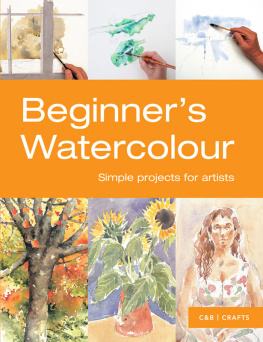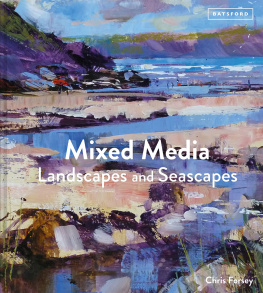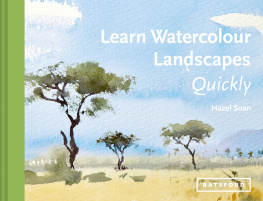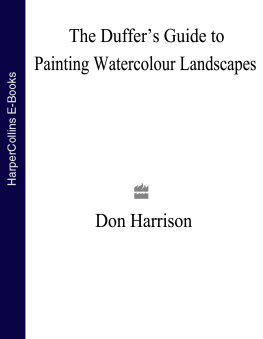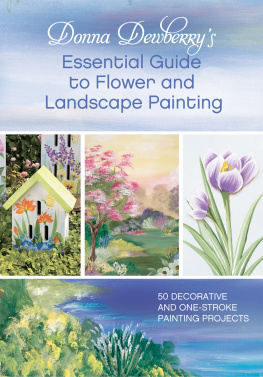Beginners Watercolour


Beginners Watercolour
Simple projects for artists

This edition and eBook published in the United Kingdom in 2015 by
Collins & Brown
1 Gower Street
London
WC1E 6HD
An imprint of Pavilion Books Company Ltd
Copyright Collins & Brown Ltd 2015
Distributed in the United States and Canada by Sterling Publishing Co, Inc.
1166 Avenue of the Americas, 17th floor, New York, NY 10036
All rights reserved. No part of this publication may be copied, displayed, extracted, reproduced, utilized, stored in a retrieval system or transmitted in any form or by any means, electronic, mechanical or otherwise including but not limited to photocopying, recording, or scanning without the prior written permission of the publishers.
eISBN 978-1-910231-51-7
This book can be ordered direct from the publisher at www.pavilionbooks.com
Contents
Chapter 1:
Understanding Washes
Chapter 2:
Understanding Colour
Chapter 3:
Adding Texture and Effects
Chapter 4:
Watercolour Subjects
Getting started
Paper, paint, a brush and clean water are all the basics that you need to start painting watercolours, although there are other tools that you can introduce into your work to expand your repertoire of techniques.
Watercolour paints
Watercolour paint is available in the form of semi-moist pans, half pans and tubes. Pans are easier to use when working on smaller-scale works. Pans and half-pans that contain a block of semi-moist paint are practical, especially for working outdoors, as they are easy to transport and you can see the colours at a glance.
Tube colour is better if you are working on large paintings that require greater quantities of paint, as it is easier to mix a bigger wash. They dry out easily, so only buy large tubes of colours that you are sure to use a lot. It is possible to use small amounts from tubes, but you are more likely to waste paint this way.
Watercolour paint is sold in two standards: one for students and one for artists. Try to buy artists quality paints, even if this means that you have less variety in your palette. It is a false economy to use cheaper and inferior materials.

Palettes
Many watercolour boxes have built-in palettes for mixing, but these provide very little space. Although you can mix watercolours on the surface of the paper, artists usually mix paint on a separate palette. There are many varieties, available in ceramic, plastic and enamelled metal. You will need one with a deep well to mix a sufficient wash to cover a large area.
A round china dish with a lid enables you to cover and store paint, and it will keep the paint wet for longer than if it were exposed. A partitioned china palette is perfect for colour mixing. You can also improvise by mixing your colours on a china plate or saucer but use a white plate, as coloured china will make it harder for you to judge your mixes accurately.
As watercolour is water soluble, palettes can easily be cleaned by washing them in the sink.

Brushes
Watercolour brushes can be made from synthetic polymer, nylon fibre or natural hair and bristle. Natural fibres are more expensive but will retain their shape and last well if looked after. Synthetic fibres are cheaper but will need to be replaced more regularly. A good compromise is a mixed-fibre brush, which benefits from the advantages of a natural brush but at a fraction of the cost.
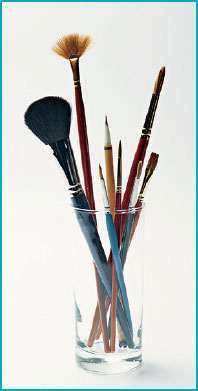
Whichever type of brush you choose, it should hold its shape and point. A good brush should also hold a decent quantity of paint and have a firm but pleasant spring to it when applied to the paper.
Brush shape is of equal importance and there are three main options to choose from:
Round brushes are most often used, and a good one can make a wide variety of marks.
Flat brushes are chisel-shaped; they are sometimes known as one-stroke brushes.
Mop or wash brushes are used for covering large areas.
More specialized brushes include fan brushes, which are designed to be used for fine feathering and delicate blending, and rigger or lettering brushes, which are used for fine lines (see ).
Generally, use the largest brush possible for the job. A good basic selection might include a no. 4 or no. 6 round brush for detail, a no. 10 or no. 12 round brush for blocking in washes over larger areas, a small flat brush and a medium-sized mop.
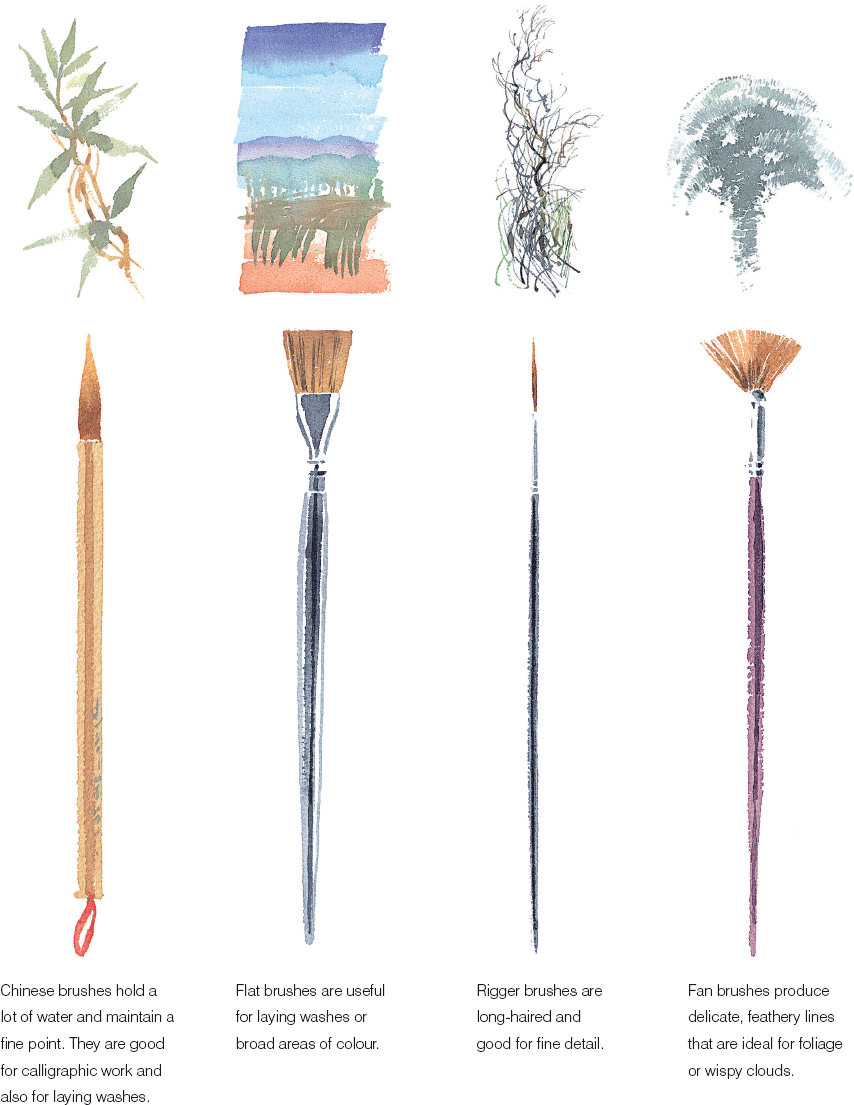
Uses of different brushes
Round brushes are the most common and frequently used watercolour brushes, but there is a great variety of shapes that you can call upon for special techniques or unusual effects. A flat brush is invaluable for laying broad washes of an even tone. For feathered effects, use a fan brush or a rigger, which allows you to paint in fine detail and is suitable for twigs and leaves. Chinese brushes are available in different sizes and are well suited to laying washes. They form perfect points, too, and are good for detail.
Caring for brushes
Any brush will be ruined if paint is allowed to dry on it, so it is important to clean brushes after use. Careful cleaning and storage will prolong the life of your brushes.
Always store brushes on their tips, otherwise you will break the hairs. Stand them upright in a glass or jar until you need them for your next painting session.

Paper
Watercolour papers are available in a range of weights from light (190gsm/90lb) through to heavy (640gsm/300lb).
There are three types of watercolour paper surface: hot-pressed (HP), cold-pressed (CP; also called not, as in not hot-pressed), and rough.
Hot-pressed papers are smooth with very little texture. They are often more heavily sized than other papers, which can cause washes to be repelled by the paper and settle in puddles.
Cold-pressed papers fall between rough and hot-pressed and have a reasonable degree of texture.
Rough papers have a pitted surface; they accept paint well and are usually capable of withstanding rough work and techniques such as scratching into the paper surface.
Paper is available in rolls, sheets and pads or blocks of different sizes. There are many different brands. It is worth experimenting with a few to find one that suits your painting style. For longevity, choose archival quality paper, preferably made from 100% cotton rag. Acid-free paper will not yellow over time. Watercolour paper cannot be reused, as the various ingredients of watercolour paint mean that the paint adheres permanently to the paper surface.

